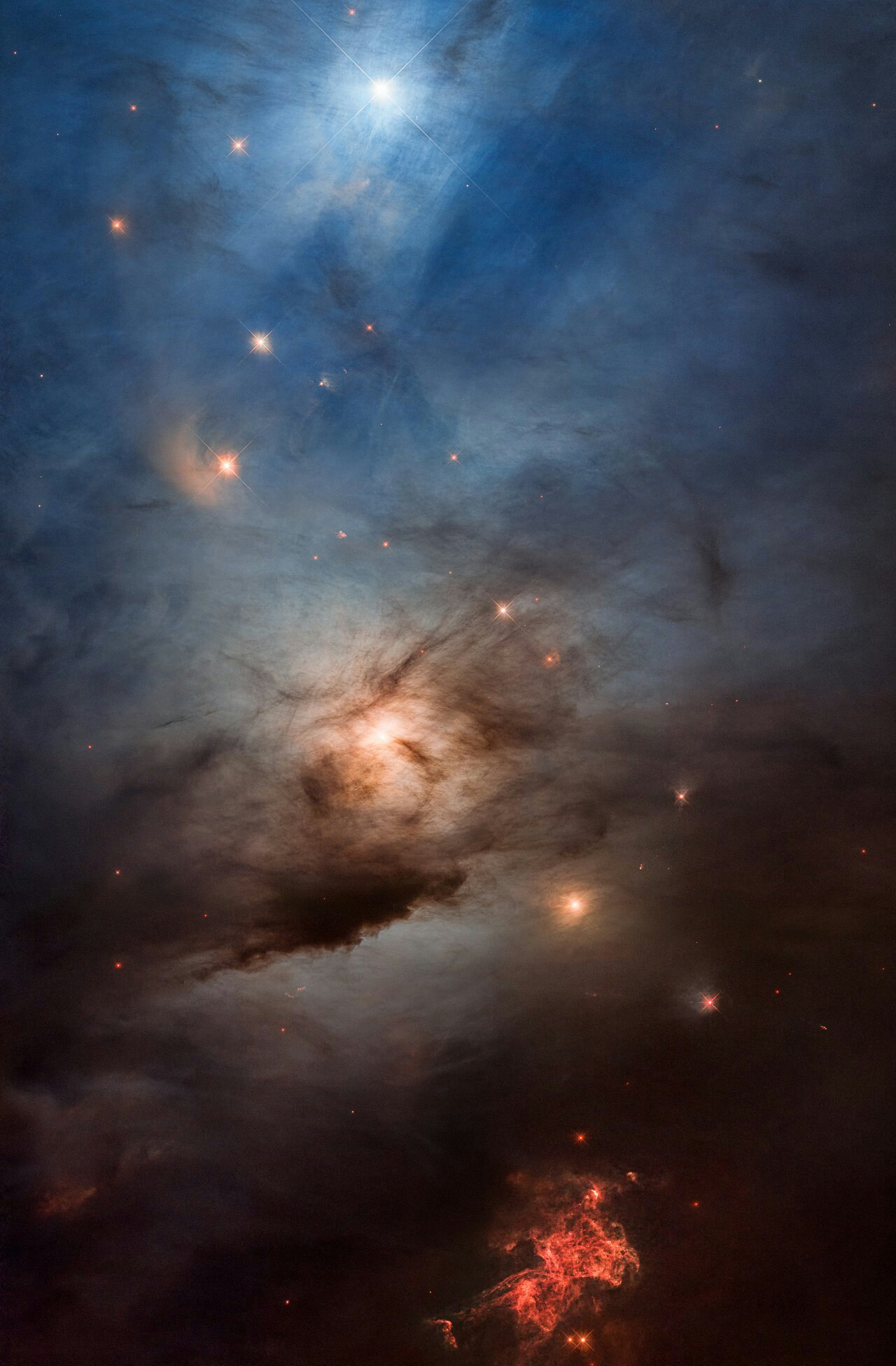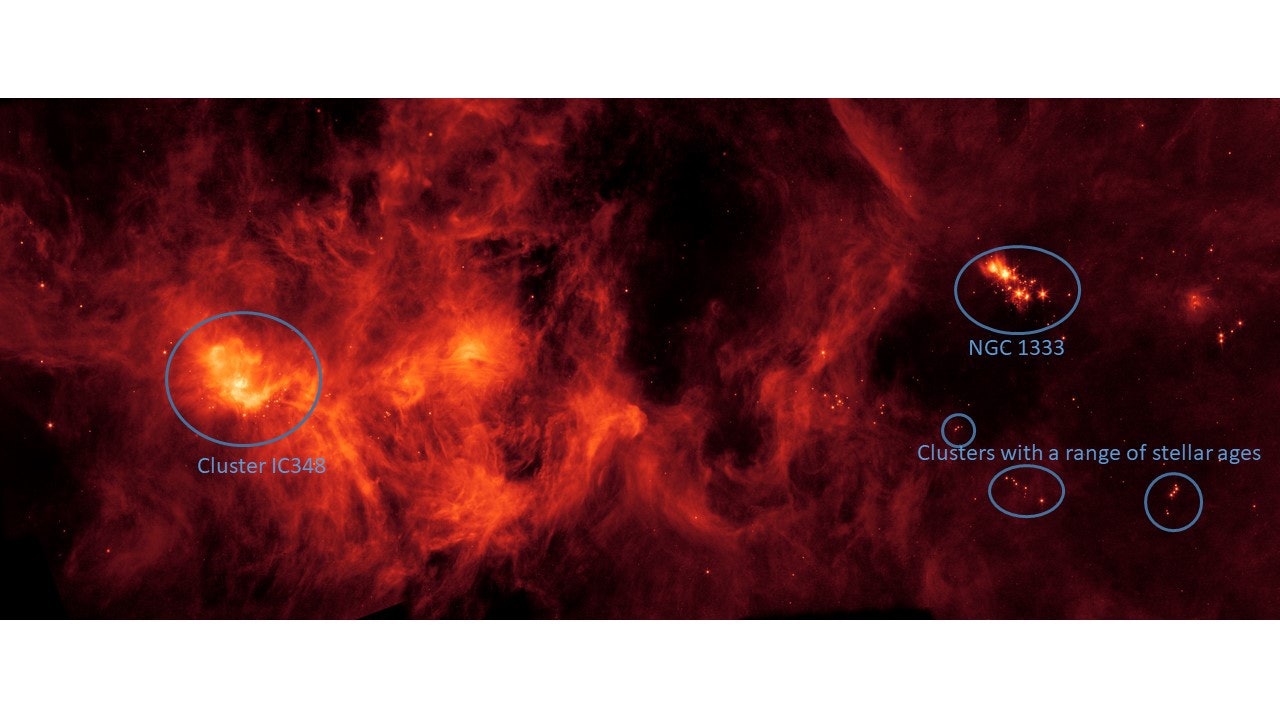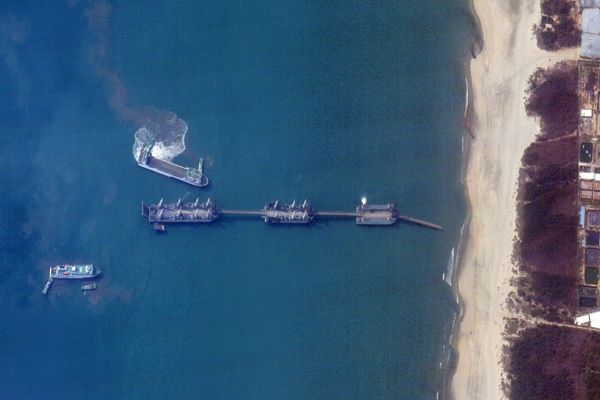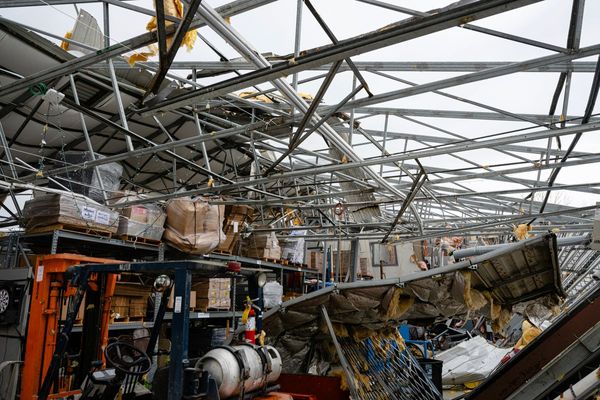
Beginnings are always an exciting time to remember. To celebrate the first day that the Hubble Space Telescope reached space, its mission team shared an image of chaotic stellar birth.
Omicron Persei is both the fictitious home of alien Lrrr in the comedic animated series Futurama, and also the real place on the night sky map where this image’s scene is located. The Perseus Molecular Cloud is home to what NASA calls an “abundance” of forming stars, assembled in clusters. In the image Hubble’s team published Thursday, the focus is a particular part of this cloud — a nebula called NGC 1333 — where different stars illuminate the dust around them, as well as regions too murky for light because of copious stellar soot.

Hubble uses its suite of instruments to observe different phenomena throughout the Universe. It launched into Earth orbit aboard the Space Shuttle Discovery on April 24, 1990. With this new image, the mission team celebrates its 33rd launch anniversary.
Things were messy at the beginning of Hubble’s operations. Two months after launch, Hubble officials announced that there was a flaw in its primary mirror. Hubble was still able to take science, but it wasn’t until 1993 that the telescope received corrective optics.
In a similar vein, the nebula is a classic example of difficult beginnings. “The image underscores the fact that star formation is a messy process in a rambunctious Universe,” writes the press office from the European Space Agency (ESA) in their image description. ESA manages the telescope alongside NASA.
The light from the two bright stars at the top of the images is dispersed as it travels through the interstellar dust of the nursery, and ESA likens this to “the Sun shining through scattered clouds.”
But things look quite strange at the bottom of the image, where a dark region, made of thick and often impenetrable dust, seems void of the ethereal scenery at the top.
“It looks like the finale of a fireworks display, with several overlapping events. This is caused by pencil-thin jets shooting out from newly forming stars outside the frame of view,” the statement says. “These stars are surrounded by circumstellar discs, which may eventually produce planetary systems, and powerful magnetic fields that direct two parallel beams of hot gas deep into space, like a double lightsaber from science fiction films. They sculpt patterns on the hydrogen cocoon, like laser lightshow tracings. The jets are a star’s birth announcement.”

Astronomers use Hubble to learn about what plays out in faraway scenes like this one, located 960 light-years away from Earth. But these regions can have implications close to home. They can provide some hints about what the Sun was like when the planets were coming together. It also offers a zoomed-out view of the Sun’s start, showing what it and its stellar siblings may have experienced 4.6 billion years ago. According to ESA, the Sun didn’t form by itself. Instead, it was “embedded inside a mosh pit” with other forming stars.
ESA says that the ancient scene may have been “more energetic and massive” than what appears to be happening in the anniversary image.







